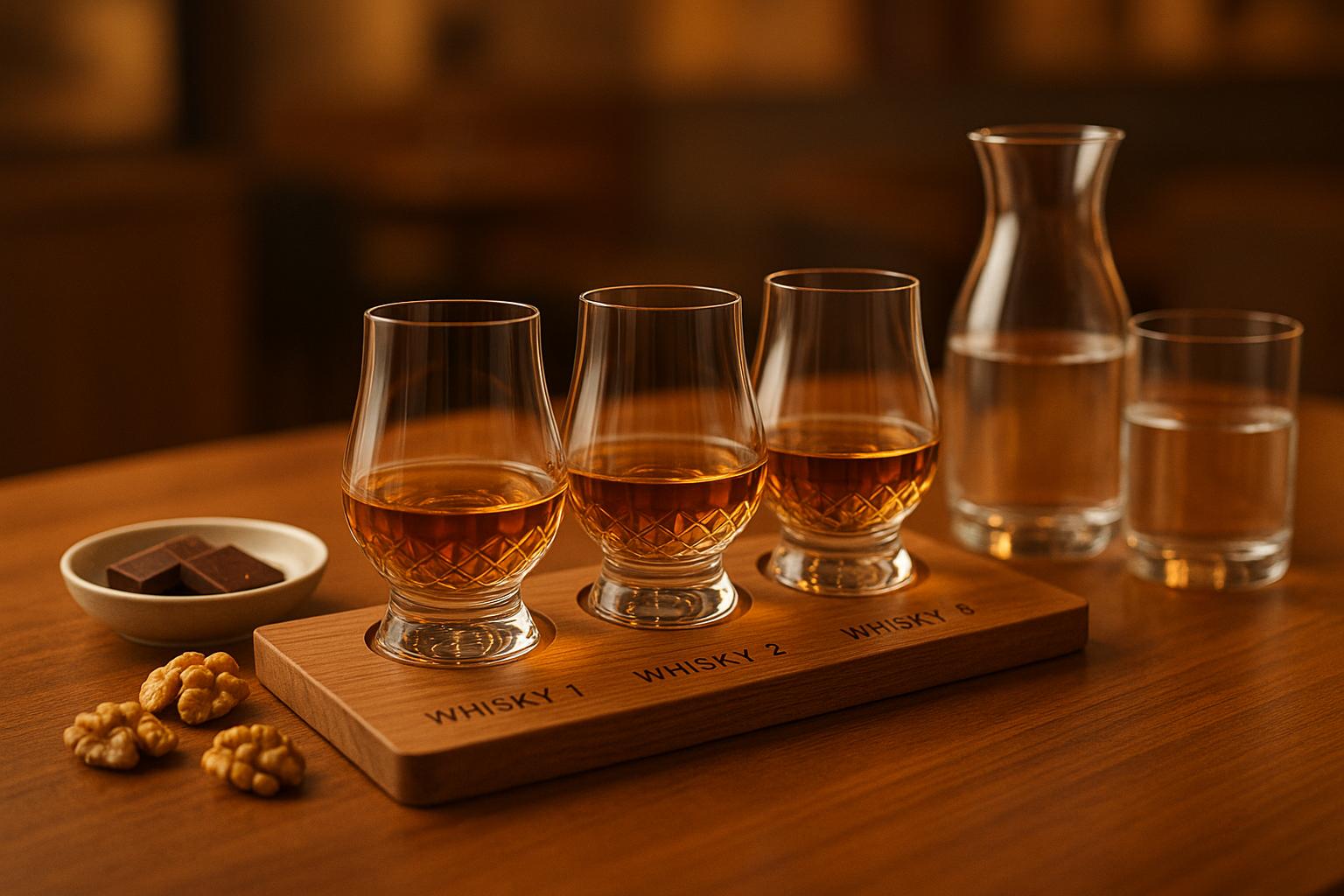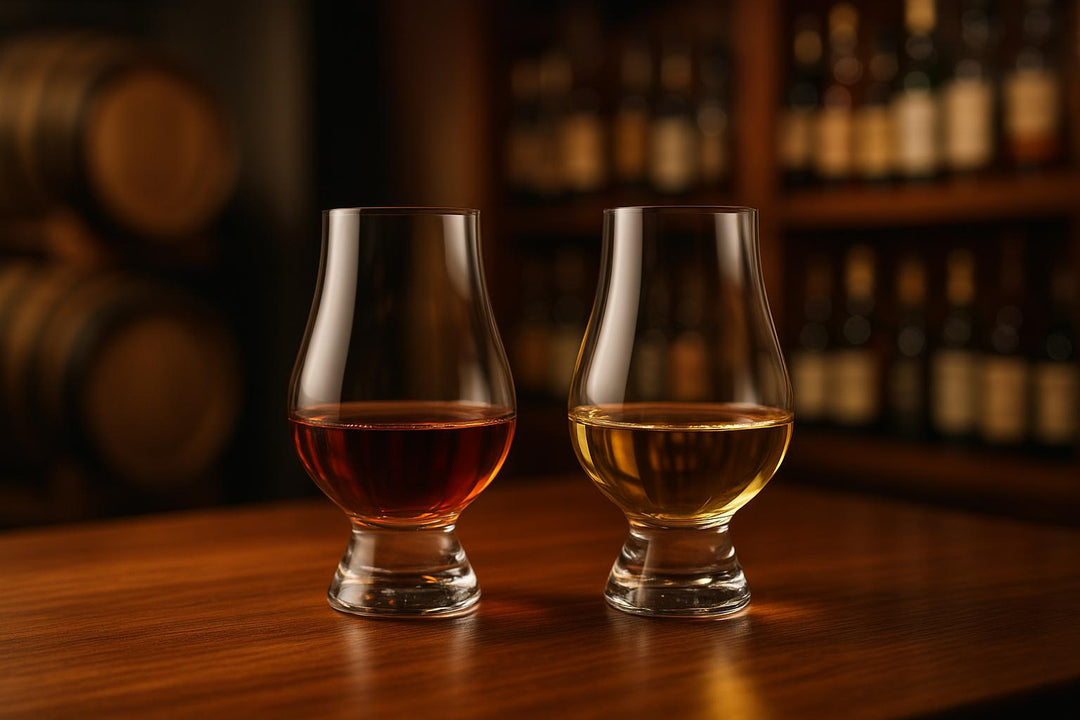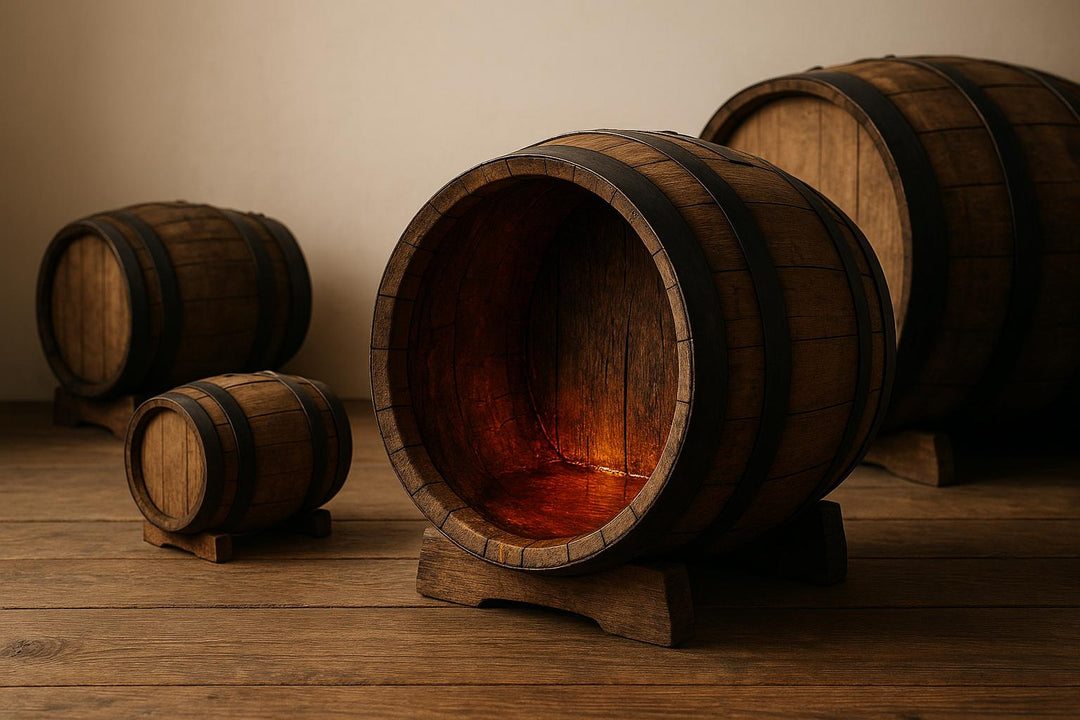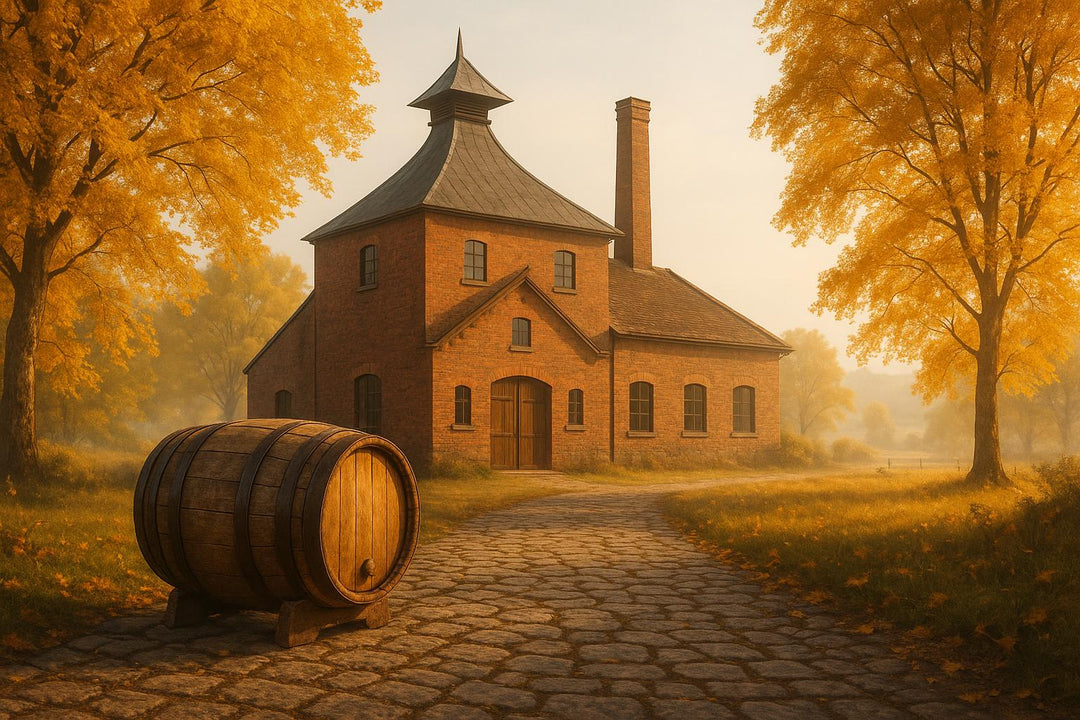A whisky tasting flight is a curated lineup of whiskies designed to highlight their differences in flavour, aroma, and finish. It’s perfect for beginners looking to explore whisky styles or seasoned enthusiasts wanting to refine their palate. Flights typically include 3–4 whiskies, served in small portions (around 15 ml each), progressing from lighter to bolder flavours.
Key Tips for Creating a Whisky Flight:
- Choose a theme: Focus on regions, cask finishes, peat levels, or even a single distillery.
- Select diverse whiskies: Include options with varying styles, cask types, and ages.
- Arrange thoughtfully: Start light (e.g., Lowland) and finish bold (e.g., Islay).
- Use proper glassware: Glencairn glasses work best for capturing aromas.
- Cleanse your palate: Use water or plain oatcakes between sips.
Whether at home or at a tasting event, whisky flights are a great way to learn, compare, and enjoy this timeless spirit.
Selecting Whiskies for Your Flight
Once you’ve grasped the purpose and appeal of a whisky tasting flight, the next step is curating the bottles that will define your experience. The whiskies you choose will either create a harmonious journey or feel like a mismatched assortment. A well-thought-out selection is the foundation of a memorable tasting, and with the right approach, you can craft a flight that’s both engaging and insightful.
Key Principles for Whisky Selection
When it comes to choosing whiskies, balance is key. You want enough variety to keep things interesting, but not so much that the flavours clash. For a four-bottle flight, consider starting with a lighter, fruity Highland whisky, moving to a honeyed Speyside, then a spiced Irish option, and finishing with the bold, smoky punch of an Islay.
Regional diversity can take your tasting to the next level. Scotland’s whisky regions each bring something unique - from the coastal influence of Island whiskies to the soft, delicate notes of Lowland styles. Don’t stop at Scotland, though. Japanese whiskies are known for their precision, American ones often showcase bold, grain-forward flavours, and other world whiskies offer fresh perspectives on what whisky can be.
The cask type plays a huge role in shaping a whisky’s personality. Including whiskies matured in different barrels - like bourbon casks or those finished in port or sherry casks - can add layers of complexity to your flight.
Age also makes a difference. Comparing a younger whisky, say a 12-year-old, with an 18-year-old can reveal how time deepens and refines flavours. That said, younger whiskies can bring a lively vibrancy that contrasts beautifully with more mature expressions.
Thematic Approaches to Whisky Flights
A theme can give your whisky flight structure and purpose, making it easier to choose bottles and sparking fascinating conversations. Here are some ideas to get you started:
- Regional exploration: Dive into one country’s offerings, such as comparing Speyside’s elegance to Highland’s robustness and Islay’s smoky intensity. Alternatively, go international with whiskies from Scotland, Japan, America, and Ireland to explore how geography and traditions shape flavour.
- Single distillery focus: Showcase the evolution of one distillery’s range. For example, Glenfiddich’s 12, 15, and 18-year-old expressions highlight how ageing transforms their signature spirit.
- Cask finish exploration: Highlight the influence of different barrels by moving from a classic bourbon cask whisky to those finished in sherry, port, rum, or wine casks.
- Peat progression: Start with an unpeated whisky, then move to lightly peated options, finishing with a heavily peated Islay expression. This approach helps tasters understand the impact of peat on flavour.
- Price point comparison: Line up whiskies across different price ranges - such as a £30 blend, a £60 single malt, a £120 aged expression, and a premium bottle over £200. It’s a great way to explore whether pricier whiskies live up to their cost.
Sourcing Whiskies for Your Flight
Finding the right whiskies has never been easier, thanks to specialist retailers like The Really Good Whisky Company. Their extensive collection caters to enthusiasts of all levels, making it simple to craft a flight that matches your vision.
As of 2 July 2025, The Really Good Whisky Company offers a wide range of Scotch, Japanese, American, and other world whiskies. Their inventory is thoughtfully organised by style - such as Old and Rare, Independent Bottlings, and Peated expressions - and by cask type, like Sherry or Bourbon finishes. This makes it straightforward to put together a cask-focused or stylistically diverse flight. Prices range from under £50 to over £1,000, ensuring options for every budget.
If you’re short on time or inspiration, their whisky tasting packs and gift sets are a great solution. These pre-selected collections often follow specific themes or regions, providing expertly curated combinations. For those building their own flight, the retailer’s categorisation by region, style, and cask type simplifies the process.
Don’t overlook independent bottlings, which often offer unique flavours and stories you won’t find in standard releases. Even if you’re working with a tight budget, mixing one standout bottle with more affordable options can result in a well-rounded and exciting tasting experience.
To include rare or expensive whiskies without breaking the bank, consider sample sizes - typically available in 30ml or 50ml portions. Many retailers also offer notifications for out-of-stock items, which can be handy when hunting for specific bottles. This way, you can create a diverse and unforgettable whisky flight without overspending.
Arranging the Order of Whiskies
The sequence in which you present whiskies can elevate a tasting from enjoyable to unforgettable. A thoughtful arrangement ensures each bottle has its moment to shine, allowing the flavours to build harmoniously rather than clashing or overshadowing one another.
Starting Light and Moving to Bold
The key to crafting a whisky flight is starting with lighter expressions and gradually moving to bolder ones. This gradual progression helps your palate adjust, ensuring subtler whiskies aren't drowned out by stronger flavours.
Begin with something light and approachable, such as a Lowland Scotch like Auchentoshan 12 or a soft Irish whisky like Redbreast 12. These whiskies ease you in with gentle flavours and a smooth profile.
Next, transition to a whisky with more character, like a Speyside or a smooth Highland malt. Examples include Glenfiddich 15 or Dalwhinnie 15 - bottles that introduce complexity without overwhelming the senses.
In the third position, bring in bolder flavours. This could be a sherried Highland whisky, a spiced American bourbon, or an Irish pot still whisky. These choices add richness and depth, preparing the palate for the grand finale.
End on a high note with your most intense expression. Peated Islay whiskies like Ardbeg 10 or Lagavulin 16 are perfect for this, as are cask-strength whiskies that deliver maximum impact. By the end of the tasting, your palate will be ready to appreciate these robust and layered flavours.
When arranging your flight, consider alcohol strength as well. Start with whiskies around 40-43% ABV and work up to cask-strength options. This ensures the delicate flavours of lighter whiskies aren’t overshadowed by the intensity of stronger ones. For example, a progression from Glenkinchie 12 to Laphroaig 10 creates a smooth and satisfying journey.
Using Palate Cleansers
To fully appreciate each whisky, cleanse your palate between tastings. A sip of still, room-temperature water works best - avoid sparkling water, as the bubbles can interfere with your ability to detect subtle aromas.
Plain oatcakes are another excellent option for resetting your palate. Steer clear of salted or flavoured varieties, as these can leave lingering tastes that clash with the whisky.
Allow for a brief pause - about two minutes - between each whisky. This not only gives your palate time to reset but also encourages participants to share their impressions and discuss the flavours they’re experiencing.
For whiskies with higher alcohol content, consider adding a few drops of water. This technique can help unlock hidden flavours and aromas without diminishing the tasting experience. Provide small droppers or teaspoons so everyone can experiment.
Finally, avoid strong-flavoured foods during the tasting. Items like cheese, chocolate, or heavily seasoned snacks can overwhelm your palate and mask the whisky’s nuances. Save those pairings for after the formal tasting session.
sbb-itb-128d6c1
Setting Up Your Tasting Experience
Creating the perfect environment for your whisky tasting enhances the overall experience, turning it into an enjoyable and educational journey. A well-thought-out setup not only highlights the unique qualities of each whisky in your flight but also ensures you can fully appreciate their distinctive characteristics.
Preparing the Right Glassware and Setting
The right glassware can make a big difference. A Glencairn glass is ideal, thanks to its tulip shape that concentrates aromas while allowing for gentle swirling. If you don’t have a Glencairn glass, opt for another quality nosing glass. Be sure to use a separate glass for each whisky to avoid mixing flavours.
Keep some water on hand - both for drinking and for diluting the whisky, if needed. Serving your whiskies at room temperature (around 18–20°C) ensures their aromas and flavours are at their best.
Tasting Techniques and Notes
Start your tasting by observing the whisky. Hold the glass up to the light and examine its colour. A pale gold hue might suggest a younger whisky or one aged in ex-bourbon casks, while a rich amber could point to sherry cask maturation or extended ageing. Gently swirl the glass and note the "legs" or "tears" that form - these can hint at the whisky's body and texture.
Next, focus on the aroma. Swirl the glass, briefly cover it to trap the aromatics, then take short sniffs with your mouth slightly open. This technique can help you pick up on notes like fruity, floral, or smoky undertones.
When it’s time to taste, take a small sip and let the whisky coat your tongue. Roll it around to engage all parts of your palate. After swallowing, pay attention to the finish - how long the flavours linger and what sensations they leave behind. Adding a drop or two of water, especially to higher-strength whiskies, can unlock subtle layers of flavour.
To keep track of your impressions, use a simple tasting sheet that covers appearance, aroma, taste, and finish. This not only helps you refine your palate but also makes it easier to remember your favourites.
Final Tips
Crafting a great tasting flight is a bit like telling a story - it needs a beginning, middle, and end. As Ted Simmons puts it, "A well-considered tasting flight has a beginning, middle, and end. The right whisky selections and the ideal order will ensure everyone arrives happily at their final destination of whisky bliss."
The secret to success lies in thoughtful planning and knowing your audience. Think about their experience level and make sure to allow at least ten minutes per dram. For those just starting out, Chris Blatner, Executive Bourbon Steward, suggests keeping things simple: "When starting out I think a flight of 3 to 4 whiskies is plenty. As you gain experience you can add more to your tasting." This approach ensures a relaxed and enjoyable pace for everyone.
Pacing matters. If everything starts tasting the same, it’s likely your palate is getting tired. As Blatner wisely notes, "Once you start to feel like everything is tasting pretty similar, your palate is probably tired and needs a break." Taking short pauses between whiskies and using a basic palate cleanser can make a big difference.
To keep things clear and enjoyable, arrange your whiskies in a logical order - from lighter, more delicate expressions to bolder, richer ones. This progression helps maintain palate clarity. Whether you stick to a theme, like exploring a single region or style, or mix it up with whiskies from across the globe, consistency in your selection process will create a smoother, more enjoyable experience.
For those who prefer a ready-made option, The Really Good Whisky Company offers whisky tasting packs curated by experts. These packs are an easy way to discover a variety of whiskies from different regions and styles, making them perfect for both beginners and seasoned enthusiasts looking to expand their horizons.
Finally, the golden rule: start with whiskies you know and love as a baseline - and don’t shy away from experimenting. Each tasting flight is a chance to sharpen your palate and uncover new favourites in the ever-fascinating world of whisky.
FAQs
How can I select the perfect theme for my whisky tasting flight?
Choosing the perfect theme for your whisky tasting flight can make all the difference in crafting an enjoyable and unforgettable experience. You could centre your selection around a region - think Scottish, Japanese, or American whiskies - delve into a particular style like peated, single malt, or blended, or even focus on age, comparing younger whiskies with their more matured counterparts. These kinds of themes not only create clear points of comparison but also bring out the distinct qualities that make each whisky special.
It's also worth considering your guests' tastes and level of whisky knowledge. If you're hosting beginners, a regional theme might feel more accessible and less intimidating. On the other hand, seasoned whisky lovers might appreciate something more adventurous, like exploring unique production techniques or sampling rare and hard-to-find bottles. By tailoring the theme to suit your audience, you’ll create a tasting session that’s both engaging and enjoyable for everyone involved.
What’s the best way to cleanse your palate between whiskies during a tasting?
To truly savour the distinct flavours of each whisky in a tasting flight, it’s essential to cleanse your palate between samples. A sip of plain water or a quick rinse with room-temperature mineral water can help neutralise any lingering tastes. Alternatively, nibbling on plain crackers or a small piece of white bread works just as well, as they refresh your palate without adding competing flavours. These straightforward techniques allow you to fully experience and appreciate each whisky on its own terms.
Why should whiskies in a tasting flight be arranged from lighter to bolder flavours?
Arranging whiskies from lighter to bolder flavours is a great way to create a smoother and more enjoyable tasting experience. Beginning with the lighter, more delicate options gives your palate a chance to ease into the tasting, making it easier to pick up on subtle notes without being overpowered by stronger flavours right from the start.
This approach also ensures that each whisky's unique character shines through. Starting with bolder whiskies could overshadow the lighter ones, but by working your way up, you can better appreciate the complexity and depth of every pour in the lineup.







Leave a comment